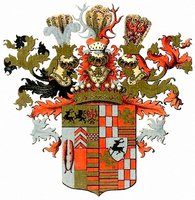Categories Online-Shop Germany German States until 1871 Stolberg
Stolberg

The descent and origins of the princes and counts of Stolberg, a widely ramified noble family, is unclear. Probably a descent of the Counts of Hohnstein is most likely. A certain count Henry of Stolberg is considered the first representative of the family, which appears in a historical document (from the year 1210). Probably at the beginning of the 13th century, the family came into the possession of today's eponymous ancestral castle in Stolberg (Harz). After that, it was fairly quiet around the line and only in 1645 was a permanent division into the older main line Stolberg-Wernigerode and the younger main line Stolberg-Stolberg.
Just as uncertain as the origin of the Counts of Stolberg is also the beginning of an independent coinage. A series of bracteates from the 13th and 14th centuries with the coat of arms of a deer was long considered the earliest document. Since Saxony at the end of the 14th Jhs. could extend its influence on Stolberg and mention the official documents of these feudal lords no coin privilege for the region, it sets now the beginning of their own coinage only in the early 16th century. From this time was - albeit only in small numbers - in a workshop in addition to the old Stolberg town hall, pennies, dimes and thalers were minted. Even rarer are the gold gulden and ducats of the 17th and 18th centuries.


